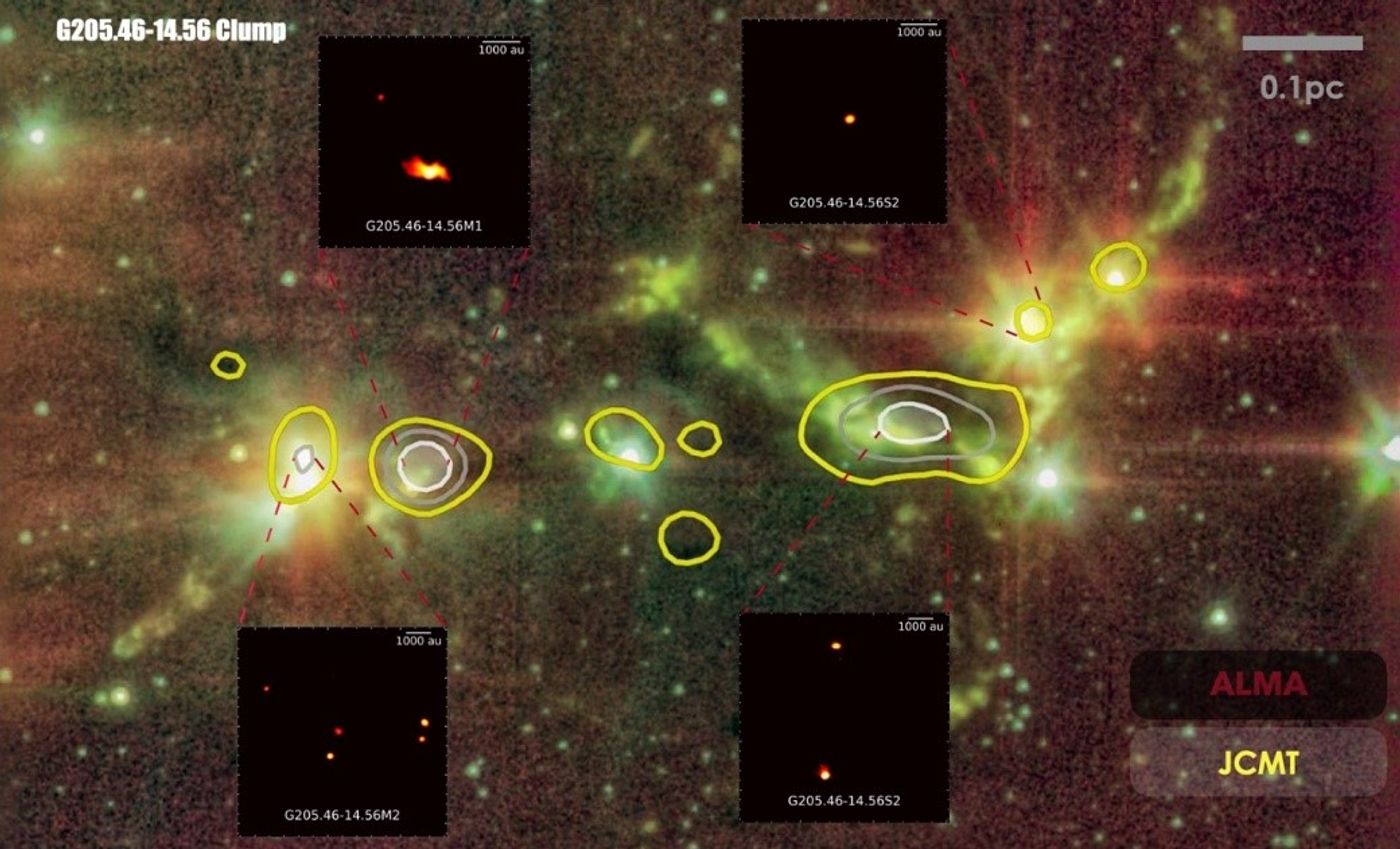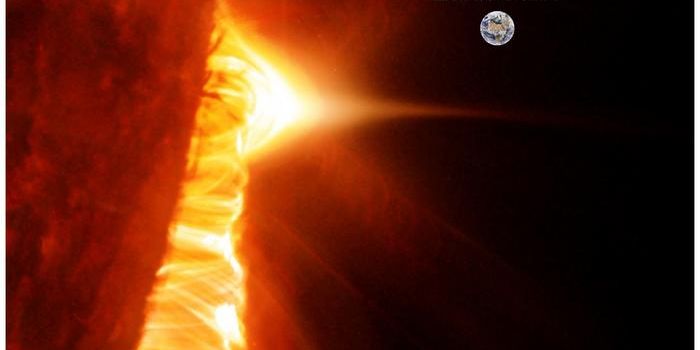Dense, Turbulent Environments Form Multiple Star Systems
Stars are born in “stellar nurseries,” otherwise known as molecular clouds. Much research has been done to understand the process of star formation. Stars are formed when there is gravitational collapse of cold, dense pockets of gas and dust – also known as cores – in molecular clouds. There have been many previous studies to investigate how single stars are born, yet nearly half of the stars in our galaxy are formed in binary or multiple star systems. Even though these multiple star systems are so abundant, star formation studies have neglected the formation mechanisms of these types of systems. Thus, the origin of multiple star systems has remained a mystery to astronomers until now.
An international team of researchers led by scientists at the Shanghai Astronomical Observatory (SHAO) of the Chinese Academy of Sciences (CAS) want to unveil the mysteries of multiple star system formation. A new study published in The Astrophysical Journal examines the properties of dense cores and how these properties affect stellar multiplicity – or the ability to form multiple stars at once. The team has discovered that denser and more turbulent environments tend to form multi-star systems.
The team observed star forming regions in the Orion Molecular Cloud Complex, the closest active star formation region at approximately 1,500 light years from Earth. This stellar nursery has been widely studied as it is an ideal laboratory for testing various models of star formation. The astronomers used the James Clerk Maxwell Telescope (JCMT) in Hawaii to identify 49 cold, dense cores in the Orion cloud that are in the process of forming young stars. Then, the team used the Atacama Large Millimeter/submillimeter Array (ALMA) in Chile to view the internal structure of these dense cores. The ALMA observations unveiled that 13 of the dense cores are forming binary or multi-star systems, while the other cores are only forming single stars.
The team then used the JCMT observations again to understand the physical characteristics of the dense cores and identify the differences between cores that are forming single stars and the ones that are forming binary or multi-star systems. The JCMT observations gave the team vital information about the size, gas density, and mass of the cores. They found that the cores that are forming multiple stars have a greater H2 gas density and mass than the cores that are forming single stars. They noted that these observations make sense because denser cores are easier to fragment because of perturbations caused by self-gravity inside the cores.
The team also used the Nobeyama 45-meter telescope to observe the N2H+ (J=1-0) molecular line. They found that the line widths – which are a proxy for the turbulence of the material being observed – for the cores forming multiple stars are statistically larger than for the cores forming single stars. Thus, multiple stars tend to form in cores that have more turbulent gas.
Thus, it seems as though binary or multiple star systems tend to form in denser and more turbulent cores, although more research is necessary to shed light on the differences between single star and multiple star formation.
Source: Chinese Academy of Sciences









